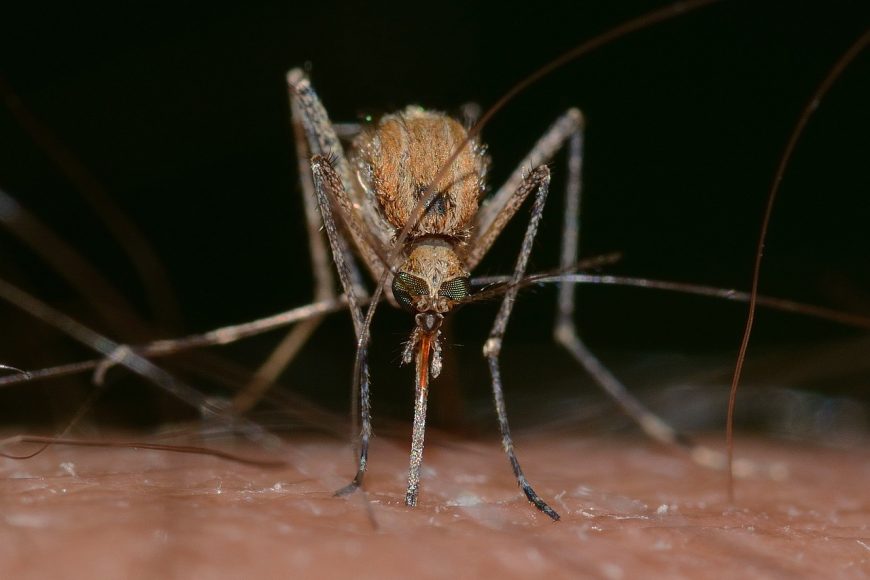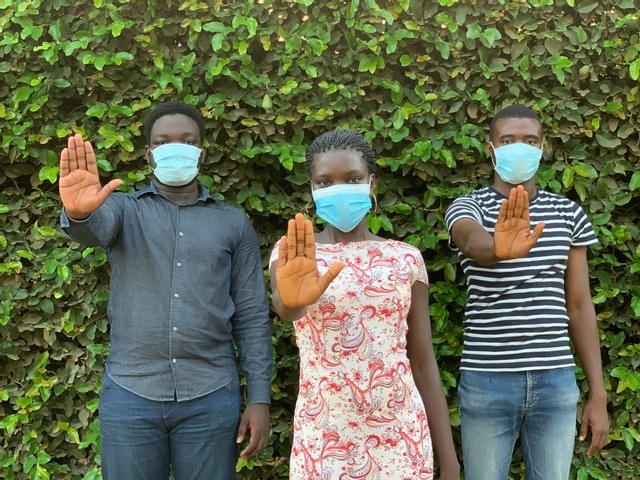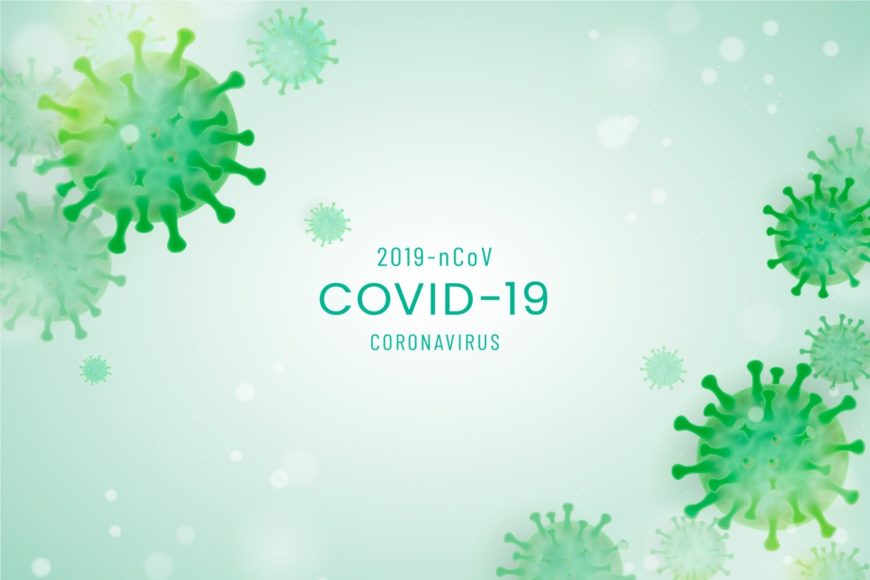Malaria Slide Bank
12, 2024| Completed Project | Reading time: 4 min

Introduction
Since 2010, the Tropical Centre for Public Health Research (TCPHR) has been helping to improve how malaria is diagnosed.
They have a special collection of over 6,000 malaria slides, called the Malaria Slide Bank (MSB), which is used to train and test microscopists, who examine blood samples for malaria.
They allow microscopists to practice and improve their skills so they can identify malaria quickly and accurately. This is especially important in places where malaria is common.
These slides are made with great care at TCPHR and checked by six experts to ensure the status of each slide is accurate.
They are then used to certify microscopists as qualified experts by the World Health Organisation (WHO).
Investigators
Mariama Alhassan Maiga, Hakeem Sanusi, Fredua Ansu, Ernest Kofi Dovlo, David Adu-Gyamfi (TCPHR).
Funders
Tropical Centre for Public Health Research (TCPHR), Medical Care Development International (MCDI), PATH Malaria Care, Impact Malaria, World Health Organisation.
How the slides are made
To make the slides, TCPHR collects blood samples. Positive malaria samples come from health facilities in the Northern Region with permission from patients, while negative samples come from people who have returned from malaria-free countries and have not been in malaria-affected areas for at least two weeks.
From one blood sample, TCPHR can prepare 100 to 200 slides following WHO guidelines. These slides are carefully prepared at the right temperature.
Training and Competency Assessments Across Ghana
The Giemsa-stained malaria blood slides from the MSB are widely used to train medical laboratory professionals across Ghana.
They also play an important role in competency assessments and programs like Outreach Training and Support Supervision (OTSS), which ensure accurate malaria testing.
These activities are organised by the Clinical Laboratory Unit of the Institutional Care Division of the Ghana Health Service and the National Malaria Elimination Programme (NMEP).
More than Just Malaria Slides
In addition to malaria blood slides, TCPHR also has over 2,000 placental tissue blocks fixed in paraffin wax, along with slides prepared from these samples using a special staining process called Haematoxylin and Eosin (H&E).
These were collected from a study involving more than 2,000 pregnant women, who were followed from pregnancy until at least six months after giving birth.
These placental slides are now used to train experts who study placental malaria, a condition that affects pregnant women and their babies.
A Resource for Ghana
Ghana, TCPHR stores these slides and placental tissues for the northern part of the country. They are used for training health workers and improving malaria testing.
Anyone who needs the slides must get permission from the National Clinical Laboratory Unit, which ensures the slides are used properly.
Why it Matters
This initiative is saving lives by making sure health workers are well-trained to detect malaria. With better testing, patients can get the right treatment faster, helping to reduce the number of people suffering from malaria and other complications.
TCPHR’s work continues to strengthen Ghana’s fight against malaria and improve healthcare outcomes across the country.
Collaborating Institutions
Institutional Care Division (ICD), Ghana Health Service, Impact Malaria, PATH Malaria Care, Improving Malaria Diagnosis (IMaD), Centres for Disease Control & Prevention (CDC), World Health Organisation (WHO), Medical Care Development International (MCDI), United States Agency for International Development (USAID), Partners.
Assessing the level of knowledge, attitude, perceptions and preventive practices regarding COVID-19
July 9, 2021 | Completed| Time: 6 min Start Date:01-02-2020
End Date:31-07-2020

Funders
Tropical Centre for Public Health Research, Navrongo Health Research Centre, Dodowa Health Research Centre, Research and Development Division
Objectives
The study seeks to assess the level of knowledge, attitude, perceptions and preventive practices regarding COVID-19 among community members in the northern, middle and southern zones of Ghana. In addition, the study determines the readiness and response to the COVID-19 pandemic at the primary health care level.
Findings
To ascertain how people’s misunderstanding and misconceptions, coupled with misinformation about the novel COVID-19, may delay controlling efforts to provide the necessary intervention with the potential to increase the rapid spread of infection in the community and health facilities. This situation may put community members’, patients’ and health care providers’ lives at risk.
Lessons
Lessons learned from the SARS outbreak in 2003 suggest that knowledge and attitudes towards infectious diseases are associated with the level of panic emotion among the population, which can further complicate attempts to prevent the spread of the disease.
Front line health care workers at the primary health care level play a critical role in disease surveillance and response to control and contain disease outbreaks.
Phase III trial of two SARS-CoV-2 Adjuvanted Recombinant Protein Vaccines for prevention against COVID-19 in adults 18 years of age
January 9, 2019 | Completed Projects | Reading time: 6 min

Investigators
Dr. Richard Sampong, Dr. Sandra Ofori, Dr. Eric Afram, Mrs. Christiana Akosua Anowuo, Ms. Mariama Alhassan Maiga
Background
The outbreak of COVID-19 in late 2019 has caused significant morbidity and mortality and disruption of socioeconomic activities all over the world. To date, there have been approximately 1,700 cases and close to 1,500 deaths in Ghana.
The pandemic exacerbated existing inequities in access to healthcare between and within countries with minimal access to COVID-19 vaccines in Low and middle-income countries, including Ghana. Against this backdrop, Sanofi Pasteur is developing two candidate vaccines for active immunisation and prevention of SARS-CoV-2 infection and COVID-19 disease.
Objectives
This Phase III study will assess how well the study vaccines protect against infection and illness caused by the SARS-CoV-2 virus. It will also assess how safe the vaccines are and how well the body’s immune system is activated by the vaccines to fight SARS-CoV-2 infection.
Methodology
The study is recruiting adults aged 18 years and above and randomly assigning them in a random manner to receive the study vaccine or the placebo. Following informed consent and after an initial assessment for eligibility, participants receive two doses of the vaccine or placebo three weeks apart and are followed up over about 13 months to assess the occurrence of COVID-19-like illness.
The study team also assess participants for any illnesses or injuries they may experience in the course of the study. Nasopharyngeal and blood samples are collected at planned visits to help make these assessments.
Key Findings
Interim analysis showed that the vaccine was highly protective against severe COVID-19 and moderately protective against moderate disease. At the same time, the vaccine was found to have an acceptable safety profile.
Expected Outcomes
The outcomes include efficacy, safety and immunogenicity of the candidate vaccines administered as a two-dose primary vaccination series with or without a booster.
Funders
Sanofi Pasteur Inc.
Collaborators
Tropical Centre for Public Health Research and Navrongo Health Research Centre
Factors influencing vaccination up-take among nomadic population in four regions of Ghana: a qualitative study
Background Vaccination has contributed to the reduction in vaccine preventable diseases. Despite, improved global coverage, vaccination among nomadic populations is still low especially in Africa. This study explored factors influencing vaccination uptake among pastoralist nomads in Ghana.
Methods
We conducted key informant interviews (KII) in 11 districts across four regions of Ghana, using grounded theory qualitative research approach. One hundred and eighty-two KII were conducted among pastoralist nomads, community opinion leaders, community health volunteers, security services personnel, local government personnel and health workers. Guided by the WHO health systems building blocks, data was coded using Nvivo 12 and analysed thematically. Results were presented as narratives with excerpts to support the findings.
Results
Community leaders support vaccination among pastoralist nomads as part of their leadership and governance responsibilities. Language barrier between health workers and pastoralist nomads affects service delivery. Also, healthcare providers fear being attacked by pastoralist nomads hence are hesitant to visit their settlements
for vaccination. With regards to health workforce, healthcare providers’ perceived use of derogatory words and discrimination against pastoralist nomads influence their vaccination uptake.
On medical product, the lack of knowledge about diseases, severity and perceived negative effects about vaccines influence vaccination uptake. Inadequate funds and logistics at the district health directorates affects outreach to nomads during vaccinations.
Leveraging existing partnership between the health services and community leaders, information centers, volunteers and butchers to send health information to pastoralist nomads influence vaccination uptake.
influencesConclusion
Community leaders support vaccination among pastoralist nomads. Nomadic pastoralist miss vaccination dues to language barrier, feel discriminated against, and lack information about diseases and vaccinations.
Strengthening Ghana Health Service collaboration with leaders of pastoralist nomads could build trust, create awareness and overcome language barrier between healthcare providers and pastoralist nomads.
Keywords Ghana, Nomadic population, Pastoralist nomads, Vaccination, Vaccination uptake
See Full Project
Community-Based Strategies to Improve Health-Related Outcomes in People Living With Hypertension in Low- and Middle-Income Countries: A Systematic Review and Meta-Analysis
Background:
Individuals living with hypertension are at an increased risk of cardiovascular- and cerebrovascular-related outcomes. Interventions implemented at the community level to improve hypertension control are considered useful to prevent cardiovascular and cerebrovascular events; however, systematic evaluation of such community-level interventions among patients living in low- and middle-income countries (LMICs) is scarce.
Methods:
Nine databases were searched for randomised controlled trials (RCTs) and cluster randomised control trials (cRCTs) implementing community-level interventions in adults with hypertension in LMICs.
Studies were included based on an explicit focus on blood pressure control. Quality assessment was done using the Revised Cochrane Risk of Bias tool for randomised trials (ROBS 2).
Results were presented according to the Preferred Reporting Items for Systematic Reviews and Meta-Analyses (PRISMA) checklist. Fixed-effect meta-analyses were conducted for studies that reported continuous outcome measures.
Results:
We identified and screened 7125 articles. Eighteen studies, 7 RCTs and 11 cRCTs were included in the analysis.
The overall summary effect of blood pressure control was significant, risk ratio = 1.48 (95%CI = 1.40–1.57, n = 12). Risk ratio for RCTs was 1.68 (95%CI = 1.40–2.01, n = 5), for cRCTs risk ratio = 1.46 (95%CI = 1.32–1.61, n = 7). For studies that reported individual data for the multicomponent interventions, the risk ratio was 1.27 (95% CI = 1.04–1.54, n = 3).
Discussion:
Community-based strategies are relevant in addressing the burden of hypertension in LMICs.
Community-based interventions can help decentralise hypertension care in LMIC and address the access to care gap without diminishing the
quality of hypertension control.
Full Project Details



